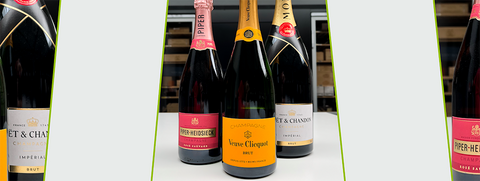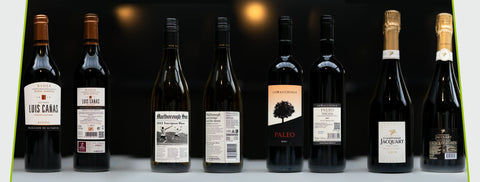The magic of bubbles unraveled
You pour a glass of bubbly. Those little bubbles dance upwards, sometimes smaller, sometimes larger. But have you ever wondered why those bubbles can be so different? From that delicate, endless flow in champagne to those quick, large bubbles in a simple glass of prosecco?
The big misconception about bubbles
Let me first clear up a common misconception: sparkling wine isn't a pumped-up soft drink. While cola is simply carbonated, the process with wine is a work of art in itself. You can taste the difference immediately, and yes, that also explains why a good champagne costs a bit more than a bottle of cola.
The second fermentation: where the magic happens
The secret lies in what winemakers call "second fermentation." After the first fermentation, which produces regular wine, a second round begins. The winemaker adds a specific mix of yeast and sugar to the base wine. This yeast gets to work, converting the sugar into alcohol and, you guessed it, carbon dioxide .
Traditional Method: the king of bubbles
The most prestigious method for producing sparkling wine is the "Methode Traditionelle." This is what you see in Champagne , Cava , and Franciacorta , among others. The second fermentation takes place in the same bottle you'll later open. It's a time-consuming process that takes at least 15 months, but the result is impressive: delicate, persistent bubbles that dance upwards like an endless stream. We'll explain that specific process later.
Alternative methods: faster but different
There are also other production methods, such as the "Charmat" or tank method. This involves secondary fermentation in large pressure tanks. The process is more efficient and less expensive, which is reflected in the price. The bubbles are often somewhat larger and dissipate more quickly—not necessarily bad, just different.
The art of serving
To get the most out of your sparkling wine, there are a few golden rules:
- Serve between 6-10°C – not ice cold.
- Personal preference: Use tall, slender glasses if you want to preserve the bubbles a bit longer and perhaps enjoy a bit more acidity, or a coupe if you prefer less acidity and a bit more joie de vivre . Or, the golden (and perhaps ideal) middle ground: a regular wine glass with a capacity of about 40 cl or more.
- Pour along the glass wall to preserve bubbles
- Open the bottle with a soft 'sigh', not with a loud bang
- Sabering is a craft in itself (but a lot of fun), as we'll explain later, but there's one thing you need to know: Don't do it with Prosecco (there's not enough pressure, so you run a greater risk of glass particles in your glass).
Recognizing quality in your glass
A good sparkling wine is recognizable by its bubbles. Small, delicate bubbles rising in regular lines and lasting for a long time usually indicate the traditional method. Larger, irregular bubbles that disappear quickly suggest a faster production method.
Conclusion: More than just bubbles
The next time you pour a glass of bubbly, take a moment to admire the spectacle. In those dancing bubbles, you'll see the result of centuries-old tradition, modern technology, and the winemaker's expertise. And yes, that makes those celebratory bubbles even more special.
Frequently Asked Questions
-
Why is champagne more expensive than prosecco?
This is mainly due to the traditional production method, which is more labor-intensive and time-consuming. -
Can I keep sparkling wine for a long time?
Many sparkling wines are meant to be drunk young, but premium (vintage) champagnes and various Franciacortas can often age for years. -
Will I lose the bubbles if I don’t drink the bottle in one go?
With a good champagne stopper, sparkling wine will stay good in the refrigerator for 2-3 days. -
Is a loud 'pop' when opening okay?
No, a gentle 'sigh' is better - this retains more bubbles in the wine.



Comments (0)
There are no comments for this article. Be the first one to leave a message!